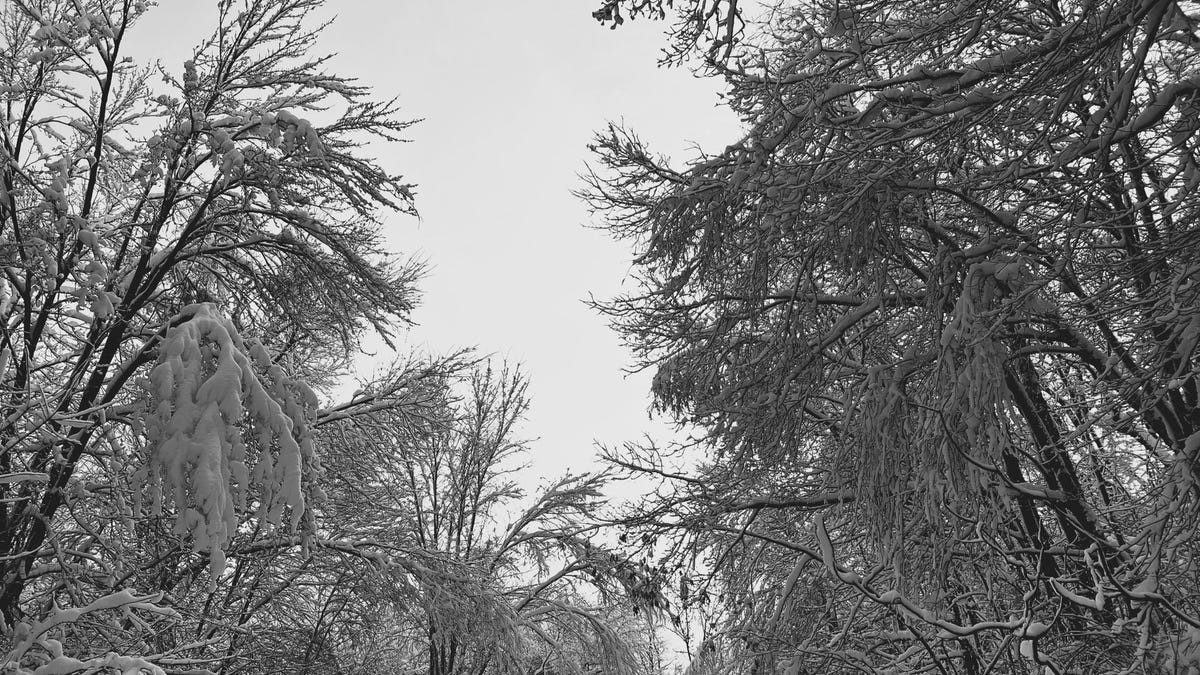[ad_1]
It’s always with a mixture of sadness and hope when we move past the holiday season and face the bleakness of January.
Hope because we face the new year with resolutions and optimism that allows us a fresh start to accomplish personal and professional goals. Sadness because the joy of the holidays that passed by in an eye’s blink gets packed away in boxes for another year. It’s a reminder to me that time passes too quickly.
But when the pine needles are swept and the last tinsel is collected, we turn the calendar and settle in for the long haul of winter. Even though it’s only been here a few weeks, it’s been a challenging winter so far. Fluctuating temperatures have given us several storms of rain and snow and lots of ice.
One recent morning as I was starting another round of snow removal, I stopped for a picture. The new snow had painted the house and the farm buildings a fresh white coat and there was a world of texture and contrast that I wanted to capture.
As I pulled out my ubiquitous phone and grabbed a few shots, I wondered what the scene would look like in black and white.
In my college days at UW-La Crosse as a mass communications student, I took a photography course. There were no digital cameras and our class focused on mastering black and white shots – we loaded film canisters, learned to roll unprocessed 35 mm film onto reels, processed the film and then made prints. Even my camera was completely manual.
Today we pull out our phones, take many photos and instantly see them, tone them, send them or share them in a matter of seconds. Photutorial.com says there are 54,400 photos taken every second, 196 million per hour, 4.7 billion per day, 32.9 billion per week, 143 billion per month, and 1.72 trillion per year.
I would spend hours in the darkroom trying to process one print, using different contrasts of photo paper and manipulating the light and shadow.
My class instructor was Ed Bardill and he was old school. Ed was influenced by Ansel Adams and attended some of his workshops in the late 1970s. Adams is known for his spectacular black-and-white nature photography. Ed was a big proponent of the zone system of image-making practiced by Adams and also by other renowned photographers like John Sexton and Cole Weston whom Ed conducted workshops with.
My recollection is that I may have earned a B in Ed’s class, as my focus – pun intended – was on writing. My portfolio was certainly not great, but I had a few decent shots. And that dark room experience was essential when I worked as a weekly newspaper editor and had to handle many of the photo duties.
Ed retired in 1988 and after he died in 2001, his family created a scholarship at UW-L in his honor. I hadn’t thought of Ed for years, but after running my farm photo through a few filters, he came to mind when I liked the black-and-white version. I shared it on social media and based on the positive comments and reactions, others like it too.
We live in a colorful world and its kaleidoscope in both nature and in people makes it special. But some days after a hectic schedule or dealing with life’s challenges, my mood is better captured with a little black and white and its many shades of gray.
So I’ll embrace the solemnity of winter and its monochromatic white landscape. There’s a beauty in the starkness which feeds quiet contemplation of the soul.
Then I will be ready for the vibrant colors of spring.
Chris Hardie spent more than 30 years as a reporter, editor and publisher. He was nominated for a Pulitzer Prize and won dozens of state and national journalism awards. He is a former president of the Wisconsin Newspaper Association. Contact him at [email protected].
[ad_2]
